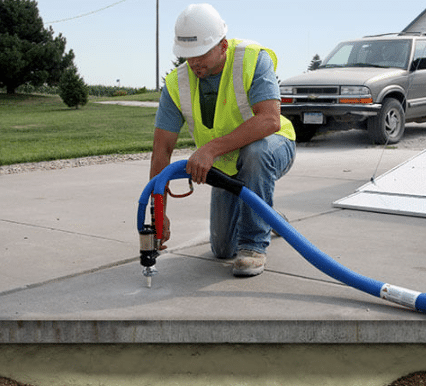What Are The Techniques For Foam-Fixing Concrete In El Cajon?

- This type of filler is designed specifically for filling gaps in concrete structures and is available at most home improvement stores. It comes as a compressed foam which expands as it dries and adheres to the surface of the concrete.
- This sealant has been specially formulated for applications where water resistance is required, such as below grade walls or certain types of roofs. It provides excellent adhesion and sealing performance, and it is easy to apply with a standard caulking gun.
- This foam is highly flexible and can be used in areas where concrete might be uneven or have small holes. It adheres well to concrete and will fill gaps up to two inches wide.
- Expanded polystyrene foam can be used as an alternative to expanding joint filler if the gap is larger than two inches or if a higher compressive strength is desired. This type of foam has very good thermal insulation properties, making it ideal for filling large spaces in exterior walls or roofs.
- For larger gaps or areas that are subject to horizontal movement, such as an expansion joint between two structures, a mesh reinforced foam can be used. This type of foam has small strands of steel fibers embedded within it, giving the foam greater strength and resistance to cracking than other types of foams.
- Asphalt mastic is a heavy-duty material frequently used in road construction and other applications where there is a need for a durable sealant. It provides excellent adhesion to concrete surfaces and provides good water resistance as well.
- For smaller spaces or joints that don’t require any additional reinforcement, self-leveling caulk can be used. This type of caulk comes in a variety of colors and can be applied quickly and easily with a caulking gun.
FAQ’s
Can I Use Expanding Foam To Lift Concrete?
Expanding foam is not recommended for lifting concrete, as the weight of the concrete may cause the foam to collapse.
What’s Worse Vertical Or Horizontal Cracks?
Horizontal cracks are generally more serious than vertical cracks as they indicate a potential structural issue. It is important to address any horizontal cracks in concrete as soon as possible.
Are Foam Fillers Water Resistant?
Many foam fillers include an additive that makes them water-resistant, but it is always best to check the product label before use. If you are working on a project where water resistance is required, it is recommended to use a sealant instead of foam for filling gaps and joints.
Conclusion
It is important to use the right foam-fixing technique for the size of your concrete gap and the type of application. While expanding joint fillers are great for small gaps, larger areas may require the use of a mesh reinforced foam or asphalt mastic, depending on what is needed. For more information, contact Concrete Contractor El Cajon at (619) 473-4433.